Ed Friedlander, M.D., Pathologist
scalpel_blade@yahoo.com


Cyberfriends: The help you're looking for is probably here.
Welcome to Ed's Pathology Notes, placed here originally for the convenience of medical students at my school. You need to check the accuracy of any information, from any source, against other credible sources. I cannot diagnose or treat over the web, I cannot comment on the health care you have already received, and these notes cannot substitute for your own doctor's care. I am good at helping people find resources and answers. If you need me, send me an E-mail at scalpel_blade@yahoo.com Your confidentiality is completely respected.
 DoctorGeorge.com is a larger, full-time service.
There is also a fee site at myphysicians.com,
and another at www.afraidtoask.com.
DoctorGeorge.com is a larger, full-time service.
There is also a fee site at myphysicians.com,
and another at www.afraidtoask.com.
Translate this page automatically
 |
With one of four large boxes of "Pathguy" replies. |
 I'm still doing my best to answer
everybody.
Sometimes I get backlogged,
sometimes my E-mail crashes, and sometimes my
literature search software crashes. If you've not heard
from me in a week, post me again. I send my most
challenging questions to the medical student pathology
interest group, minus the name, but with your E-mail
where you can receive a reply.
I'm still doing my best to answer
everybody.
Sometimes I get backlogged,
sometimes my E-mail crashes, and sometimes my
literature search software crashes. If you've not heard
from me in a week, post me again. I send my most
challenging questions to the medical student pathology
interest group, minus the name, but with your E-mail
where you can receive a reply.
Numbers in {curly braces} are from the magnificent Slice of Life videodisk. No medical student should be without access to this wonderful resource. Someday you may be able to access these pictures directly from this page.
Also:
Medmark Pathology -- massive listing of pathology sites
Freely have you received, freely give. -- Matthew 10:8. My
site receives an enormous amount of traffic, and I'm
handling about 200 requests for information weekly, all
as a public service.
Pathology's modern founder,
Rudolf
Virchow M.D., left a legacy
of realism and social conscience for the discipline. I am
a mainstream Christian, a man of science, and a proponent of
common sense and common kindness. I am an outspoken enemy
of all the make-believe and bunk which interfere with
peoples' health, reasonable freedom, and happiness. I
talk and write straight, and without apology.
Throughout these notes, I am speaking only
for myself, and not for any employer, organization,
or associate.
Special thanks to my friend and colleague,
Charles Wheeler M.D.,
pathologist and former Kansas City mayor. Thanks also
to the real Patch
Adams M.D., who wrote me encouragement when we were both
beginning our unusual medical careers.
If you're a private individual who's
enjoyed this site, and want to say, "Thank you, Ed!", then
what I'd like best is a contribution to the Episcopalian home for
abandoned, neglected, and abused kids in Nevada:
My home page
Especially if you're looking for
information on a disease with a name
that you know, here are a couple of
great places for you to go right now
and use Medline, which will
allow you to find every relevant
current scientific publication.
You owe it to yourself to learn to
use this invaluable internet resource.
Not only will you find some information
immediately, but you'll have references
to journal articles which you can obtain
by interlibrary loan, plus the names of
the world's foremost experts and their
institutions.
Alternative (complementary) medicine has made real progress since my
generally-unfavorable 1983 review linked below. If you are
interested in complementary medicine, then I would urge you
to visit my new
Alternative Medicine page.
If you are looking for something on complementary
medicine, please go first to
the American
Association of Naturopathic Physicians.
And for your enjoyment... here are some of my old pathology
exams
for medical school undergraduates.
I cannot examine every claim which my correspondents
share with me. Sometimes the independent thinkers
prove to be correct, and paradigms shift as a result.
You also know that extraordinary claims require
extraordinary evidence. When a discovery proves to
square with the observable world, scientists make
reputations by confirming it, and corporations
are soon making profits from it. When a
decades-old claim by a "persecuted genius"
finds no acceptance from mainstream science,
it probably failed some basic experimental tests designed
to eliminate self-deception. If you ask me about
something like this, I will simply invite you to
do some tests yourself, perhaps as a high-school
science project. Who knows? Perhaps
it'll be you who makes the next great discovery!
Our world is full of people who have found peace, fulfillment, and friendship
by suspending their own reasoning and
simply accepting a single authority which seems wise and good.
I've learned that they leave the movements when, and only when, they
discover they have been maliciously deceived.
In the meantime, nothing that I can say or do will
convince such people that I am a decent human being. I no longer
answer my crank mail.
This site is my hobby, and I presently have no sponsor.
This page was last updated February 6, 2006.
During the ten years my site has been online, it's proved to be
one of the most popular of all internet sites for undergraduate
physician and allied-health education. It is so well-known
that I'm not worried about borrowers.
I never refuse requests from colleagues for permission to
adapt or duplicate it for their own courses... and many do.
So, fellow-teachers,
help yourselves. Don't sell it for a profit, don't use it for a bad purpose,
and at some time in your course, mention me as author and KCUMB as my institution. Drop me a note about
your successes. And special
thanks to everyone who's helped and encouraged me, and especially the
people at KCUMB
for making it possible, and my teaching assistants over the years.
Whatever you're looking for on the web, I hope you find it,
here or elsewhere. Health and friendship!
QUIZBANK Metabolic #'s 1-4, 9-24
INTRODUCTION
Serum protein electrophoresis is generally performed to identify patients who have paraproteins.
* Future pathologists: Quality assurance and reproducibility Am. J. CLin. Path. 97: 97, 1992.
Although there are many different proteins in human serum, when they are separated
electrophoretically by the usual procedures in the hospital lab, this is the pattern you will see in a
healthy person.
What's in each peak?
Transthyretin ("retinol binding protein"; "prealbumin") This is a single protein involved in the transport of thyroid hormones and vitamin A derivatives,
worth mentioning because it migrates on the far side of albumin (hence the misleading old name
"prealbumin"). It is usually not visible on routine serum protein electrophoresis, but measuring it by
a separate assay is usable as an indicator of general health. (Low levels suggest the acute phase
reaction, protein malnutrition, or liver disease.) Albumin (migrates to the anode)
α-1 globulins
α-1 protease inhibitor (α-1 antitrypsin)
* α-1 glycoprotein (* orosomucoid)
α fetoprotein (if present)
high density lipoprotein (HDL)
α-2 globulins
α-2 macroglobulin
antithrombin III
ceruloplasmin
haptoglobin (this is usually the predominant component)
Beta globulins
beta and pre-beta lipoproteins (LDL and VLDL)
C3
C-reactive protein
hemoglobin (free)
plasminogen
transferrin (*"principal component of the beta1 subdivision")
Gamma globulins
Immunoglobulins. (IgM migrates closer to the beta region, IgA between beta and gamma peaks,
IgG throughout the gamma region.)
Most of these proteins are familiar to you. α-1 acid glycoprotein ("orosomucoid") and
C-reactive protein are important to students of medicine only in connection with serum protein
electrophoresis and the acute phase reaction (see below).
*Most serum protein electrophoresis is performed at pH 8.6, and the application point falls in here; it
may appear as a "peak".
SERUM ALBUMIN
This is the major protein in the blood. It is routinely measured on the automated chemical profile.
Increased serum albumin does not occur naturally. (Dehydration may produce a relative
hyperalbuminemia, or someone may administer too much albumin by vein.)
Decreased serum albumin has several important causes:
protein malnutrition (cachexia, alcoholics, celiac disease, pancreatic duct problems, Crohn's,
Whipple's, cystic fibrosis, some hospital diets, etc.; albumin is a good measure of protein nutrition)
hepatocellular disease (decreased synthesis)
nephrotic syndrome (albumin is often very low)
thermal burns, skin disease (loss through skin)
plasma cell myeloma (usual, the mechanism is uncertain)
acute or chronic inflammation (lupus, TB, osteomyelitis, rheumatoid arthritis, etc. This is
essentially due the acute phase reaction, and the albumin level will be only slightly low.)
pregnancy (mild decrease)
congenital analbuminemia (this rare genetic causes only mild dependent edema)
*Sometimes the albumin peak is double. If the peaks are the same height, the patient is a
heterozygote. If one peak is smaller, you are seeing a drug-albumin complex.
*Slurring of the albumin peak (i.e., too wide and too flat) is generally due to jaundice, since
bilirubin binds to albumin.
"THE ACUTE PHASE REACTION" (see NEJM 311: 1413, 1984)
When there is significant ongoing inflammation or tissue necrosis, the body usually responds with
increased serum levels of several proteins. (Interleukin-1, from mononuclear phagocytes, probably
initiates the reaction.)
α-1 acid glycoprotein, α-1 protease inhibitor, antithrombin III, C3, C-reactive protein,
ceruloplasmin, fibrinogen, and haptoglobin increase.
C-reactive protein appears in the serum in 4-6 hours; the other proteins begin to increase in a day or
so.
Simultaneously, serum levels of albumin, prealbumin, and transferrin decrease.
Because of differences in half-lives, the drop in prealbumin is seen first, while albumin may take a
few weeks to drop significantly.
The erythrocyte sedimentation rate, a test you can order in several forms, increases during the acute
phase reaction.
Nothing is different about the red cells. The increased fibrinogen and other globulins in the plasma
alter blood physics to cause red cells to sink more rapidly.
Part of the secret is that the relatively electropositive globulins partly neutralize the zeta potential,
causing the red cells to stack. Fibrinogen molecules also line up and help streamline the sinking of
red cell stacks.
*This effect was known to Hippocrates.
The "sed rate" is increased in anemia (there is a correction factor), in the presence of a paraprotein
(see below), and during normal pregnancy and menstruation.
*(Future lab directors: "Sed rates" will increase greatly if there is heavy construction near the lab
causing vibrations!)
The "sed rate" is decreased in polycythemia and when there is much poikilocytosis (sickle cell
disease, hemoglobin C disease, hereditary spherocytosis, etc.)
Whatever its limitations, the "sed rate" can rule out uncomplicated hypochondriasis and can be used
to monitor the course of an illness.
Remember its usefulness in detecting temporal arteritis and polymyalgia rheumatica.
PARAPROTEINS ("M-proteins")
Greatly increased amounts of some normally-undetected serum protein is called paraproteinemia,
and the abnormally-increased protein is called a paraprotein or M-protein.
("M" means both monoclonal and myeloma, the usual cause of an M-protein.)
Most often, the paraprotein is all or part of an immunoglobulin molecule.
Especially if the paraprotein is light chains, it may spill into the urine ("Bence-Jones proteinuria").
You can test urine for Bence-Jones protein by yourself, using a test tube and a Bunsen burner.
Bence-Jones protein precipitates on heating (around 40-60), then redissolves just before the urine
boils.
Paraprotein appears as a sharp peak (a "spike"), most often in the gamma region, though it may be
anywhere.
Such a peak indicates the presence of a monoclonal gammopathy
A majority of detected monoclonal gammopathies are the result of plasma cell myeloma. These
patients typically have depression of other gamma globulins and albumin.
Some other causes of monoclonal gammopathies include:
Waldenstrom's macroglobulinemia
heavy chain disease
cryoglobulinemia (some cases, i.e., *types I and II)
CLL, lymphoma, amyloidosis (occasional cases)
*Sometimes, patients with diseases in which there is long-term increased production of
immunoglobulins (tuberculosis, leprosy, chronic active hepatitis, sarcoidosis, primary biliary
cirrhosis, collagen-vascular disease) may develop a superimposed monoclonal gammopathy.
A substantial minority of detected monoclonal gammopathies are apparently unrelated to any
disease.
These usually occur in older patients. The quantity of paraprotein in the blood is less than 2.0
gm/dL, Bence-Jones proteinuria (rarely present) is less than 60 mg/L, and there is no suppression of
other immunoglobulins or albumin.
These patients are said to have "benign monoclonal gammopathy", "monoclonal gammopathy of
uncertain significance", "MGUS", etc.
Most do not go on the develop plasma cell myeloma or amyloidosis B, though a large minority do.
A few of these folks have an IgM directed against a myelin glycoprotein,
and get a peripheral neuropathy (J. Neuro. 243: 34, 1996.
Once a paraprotein it detected, it may be characterized by immuno-electrophoresis, a technique with
which you are familiar from your course in immunology.
The hospital lab routinely checks the patient's serum with antisera to detect α, gamma, and mu
heavy chains and kappa and lambda light chains.
Remember that a precipitation band including both the normal serum components and a large
amount of paraprotein will appear bent. (Why?)
These pretty teaspoons are rapidly being replaced by immunofixation electrophoresis in most labs
(Pathology 21: 35, 1989). While it is more expensive, it is much easier to read, and picks up
secondary paraproteins readily.
Don't be fooled by these other causes of a "spike" on serum protein electrophoresis:
α-2 macroglobulin (α-2 region, nephrotic syndrome)
haptoglobin (α-2 region toward the beta side; acute phase reaction)
transferrin (beta region; iron deficiency or late pregnancy)
SERUM PROTEIN ELECTROPHORESIS
Indications for this interesting study include:
symptoms or findings suggestive of plasma cell myeloma (i.e., a patient over age 40 with bone pain,
a pathologic fracture, unexplained anemia, infection, Rouleaux formation, hypercalcemia, low
albumin, high globulin, etc.)
symptoms or findings suggestive of paraproteinemia (i.e., cryoglobulinemia, hyperviscosity
syndrome, Bence-Jones proteinuria)
looking for, or monitoring levels of, a paraprotein in plasma cell myeloma or any other B-cell tumor
("tumor marker")
?? evaluating protein abnormalities revealed by routine screening
Interpretation requires knowledge of common patterns.
α-1 protease inhibitor deficiency: much decreased α-1
Acute phase reaction: decreased or N albumin, increased or N α-1, increased α-2
*(This is sometimes called the "immediate response". If the process has been going on long enough
to generate an antibody response, you see increased gamma, and may call this the "delayed
response". These terms are not in wide usage.)
Sarcoidosis is known for producing the "sarcoid steps", with a small increase in α-1 and
progressively greater increases in α-2, beta, and gamma. (This is no substitute for finding a
non-caseating granuloma in a biopsy of some part of your patient's body....)
Protein-losing enteropathy: much decreased albumin, increased α-2, decreased gamma
Nephrotic syndrome: much decreased albumin, much increased α-2, much decreased
gamma
Much of the α-2 increase is due to α-2 macroglobulin, which is greatly increased in this
condition. This second-largest of the plasma proteins is retained while smaller molecules are lost
into the urine.
Chronic liver disease: decreased albumin, much increased gamma with "beta-gamma bridging"
(caused by IgA)
Polyclonal gammopathy: much increased gamma without any "spike"
"Polyclonal gammopathy" occurs in chronic liver disease (see above), SBE, sarcoidosis (see above),
collagen-vascular disease, AIDS
An increase in proteins lying between the beta and gamma regions ("beta-gamma bridging") may be
seen in polyclonal gammopathy of any etiology, though it is best known for its association with liver
disease.
* Oligoclonal bands here suggest AIDS or autoimmune disease.
Plasma cell myeloma: decreased albumin, much decreased gamma except for "spike" (increased
to much-increased)
At presentation, 80% of patients with plasma cell myeloma have a serum "spike". All but 1-2% of
the rest will have Bence-Jones proteinuria, and light chains may appear in the serum as well,
especially as renal function goes.
Benign monoclonal gammopathy: N gamma except for "spike" (increased to much increased)
See above. Up to 3% of older people will have a "monoclonal gammopathy of uncertain
significance". You may be doing them a favor by not discovering it. Order serum protein
electrophoresis with discretion!
CRYOGLOBULINS (Arch. Path.
Lab. Med. 123: 119, 1999; Am. J. Clin. Path. 117: 606, 2002)
These are proteins that reversibly precipitate in serum left overnight (or for 72 hr.) in the
refrigerator. (Cryofibrinogens can be checked simultaneously; they're only in plasma.)
"Cryoglobin"/"cryoglobulin" refers to a physical property, not a distinct protein.
Some of these are M-proteins. If it's not an M-protein, we speak of "mixed cryoglobulinemia".
Most of the rest are rheumatoid factors bound to IgG.
Occasionally they are other antigen-antibody complexes, for example, hepatitis B or C (NEJM 330:
751, 1994, many others) virus and antibodies.
Indications for and interpretation of this study are not well defined.
Cryoglobulins are common in patients with lymphoproliferative disorders, monoclonal
gammopathies, chronic infections, autoimmune disease, idiopathic Raynaud's syndrome, and are
found in perhaps 1% of healthy people.
They may cause otherwise-unexplained purpura, vasculitis, or kidney problems.
PROBLEMS:
1. What would a classic immunoelectrophoresis look like if the sample is urine containing Bence-Jones
protein?
2. What would a classic serum immunoelectrophoresis look like if the patient has only Bence-Jones
protein in the blood?
3.
What would a classic serum immunoelectrophoresis look like if the patient has α heavy-chain
disease?
4.
What would a classic serum immunoelectrophoresis look like if the patient has an IgD spike?
5.
The common patterns seen on serum protein electrophoresis are fairly characteristic of various
diseases. For which diseases does do you think it really helps make the diagnosis?
 I am presently adding clickable links to
images in these notes. Let me know about good online
sources in addition to these:
I am presently adding clickable links to
images in these notes. Let me know about good online
sources in addition to these:
Pathology Education Instructional Resource -- U. of Alabama; includes a digital library
Houston Pathology -- loads of great pictures for student doctors
Pathopic -- Swiss site; great resource for the truly hard-core
Syracuse -- pathology cases
Walter Reed -- surgical cases
Alabama's Interactive Pathology Lab
"Companion to Big Robbins" -- very little here yet
Alberta
Pathology Images --hard-core!
Cornell
Image Collection -- great site
Bristol Biomedical
Image Archive
EMBBS Clinical
Photo Library
Chilean Image Bank -- General Pathology -- en Español
Chilean Image Bank -- Systemic Pathology -- en Español
Connecticut
Virtual Pathology Museum
Australian
Interactive Pathology Museum
Semmelweis U.,
Budapest -- enormous pathology photo collection
Iowa Skin
Pathology
Loyola
Dermatology
History of Medicine -- National Library of Medicine
KU
Pathology Home
Page -- friends of mine
The Medical Algorithms Project -- not so much pathology, but worth a visit
National Museum of Health & Medicine -- Armed Forces Institute of Pathology
Telmeds -- brilliant site by the medical students of Panama (Spanish language)
U of
Iowa Dermatology Images
U Wash
Cytogenetics Image Gallery
Urbana
Atlas of Pathology -- great site
Visible
Human Project at NLM
WebPath:
Internet Pathology
Laboratory -- great siteEd Lulo's Pathology Gallery
Bryan Lee's Pathology Museum
Dino Laporte: Pathology Museum
Tom Demark: Pathology Museum
Dan Hammoudi's Site
Claude Roofian's Site
Pathology Handout -- Korean student-generated site; I am pleased to permit their use of my cartoons
Estimating the Time of Death -- computer program right on a webpage
Pathology Field Guide -- recognizing anatomic lesions, no pictures
St.
Jude's Ranch for Children
I've spent time there and they are good. Write "Thanks
Ed" on your check.
PO Box 60100
Boulder City, NV 89006--0100
More of my notes
My medical students
Clinical
Queries -- PubMed from the National Institutes of Health.
Take your questions here first.
HealthWorld
Yahoo! Medline lists other sites which may work well for you

We comply with the
HONcode standard for health trust worthy
information:
verify
here.
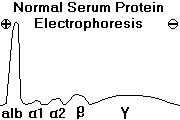
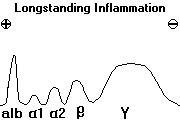
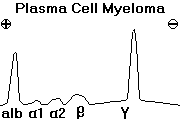
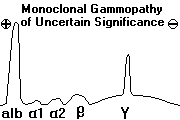
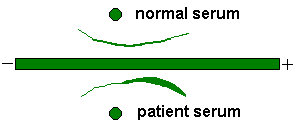
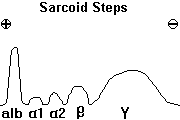
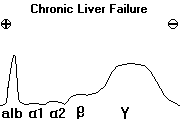

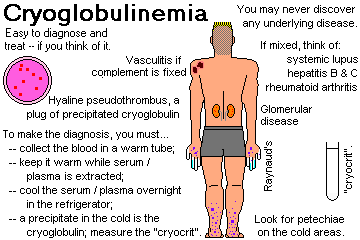
| Visitors to www.pathguy.com reset Jan. 30, 2005: |
Ed says, "This world would be a sorry place if
people like me who call ourselves Christians
didn't try to act as good as
other
good people
."
Prayer Request
 Teaching Pathology
Teaching Pathology
PathMax -- Shawn E. Cowper MD's
pathology education links
Ed's Autopsy Page
Notes for Good Lecturers
Small Group Teaching
Socratic
Teaching
Preventing "F"'s
Classroom Control
"I Hate Histology!"
Ed's Physiology Challenge
Pathology Identification
Keys ("Kansas City Field Guide to Pathology")
Ed's Basic Science
Trivia Quiz -- have a chuckle!
Rudolf
Virchow on Pathology Education -- humor
Curriculum Position Paper -- humor
The Pathology Blues
 Ed's Pathology Review for USMLE I
Ed's Pathology Review for USMLE I
 | Pathological Chess |
 |
Taser Video 83.4 MB 7:26 min |